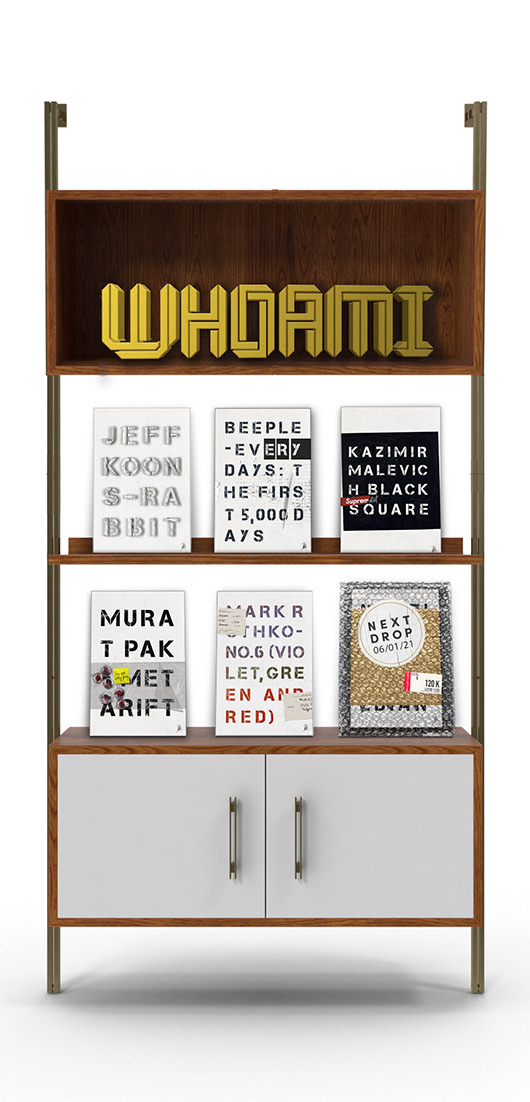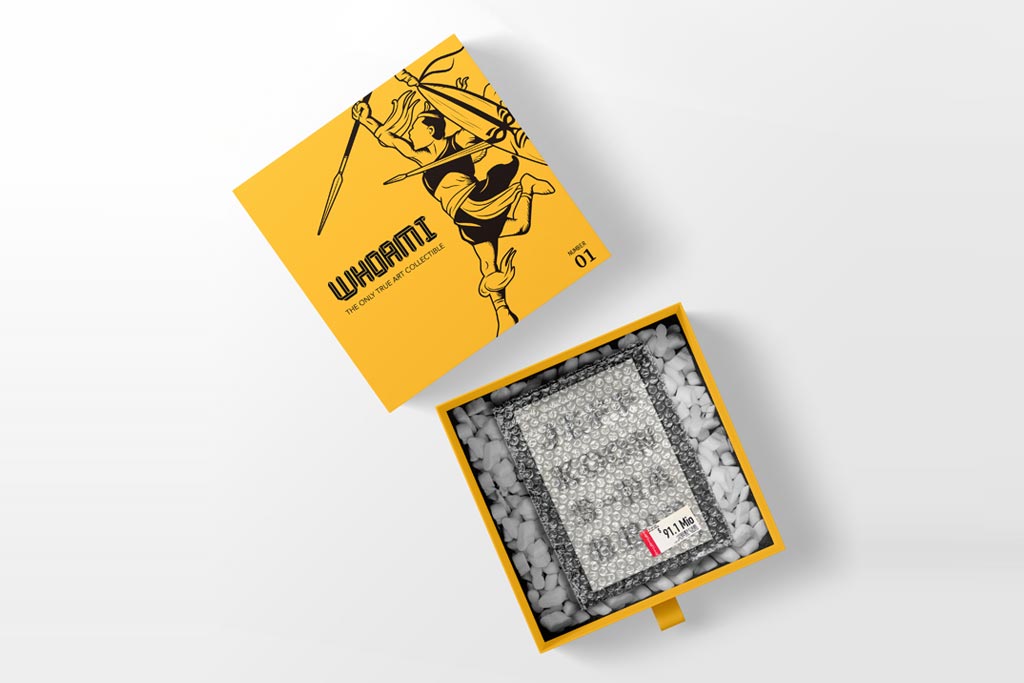

You can find my works by clicking => here
40.758896° N
-73.985130° W
+49 (0)159 0135 0980

- Project Name
- Who Am I
- Category
- Art Collectible
- Year
- 2021
You love art? You are fascinated by the most famous artists and their iconic artworks? You always dreamt of being a big collector with the ability to buy whatever you are interested in? But you simply don't have enough money?
That's not an issue anymore! You can now buy and collect the most exclusive art works in the world for a bargain! Buy a Warhol swap a Koons or get your own Rothko for roughly about 9.99 (depending on ETH) a piece. Create your own true art collection. No reproductions, no copies. Originals freshly minted for your pleasure.
Acquiring "WHO AM I" art collectibles is more than just adding art works to your collection. It's a fulfilling and rewarding process of creating wealth. Each piece comes with a unique price tag representing the incredible intrinsic value of its paragon. The first 3 collectors who are able to acquire a portfolio of over a billion $ will be in the splendid position to receive a custom piece (1/1) by INTOXICATED DEMONS.
If you made it to this point, you are ready to read beyond the pure arbitrary promotional assertions. The story continues like this: It's not long ago that i walked down the streets almost stumbling about a pile of some old crappy items, that someone had just placed there - free to take aways if wanted. Part of these no longer required consumer goods was a medium size canvas. It was obviously worth nothing anymore - at least to the pre-owner. But the fact, that it was just standing there, to hopefully find a new home, that might appreciated its existence, brought back an old story that i discussed so many times over the years with artists from around the world, collectors and fellow art world (...). What is the deep and profound value of art without the art market. What is a piece of art worth, if there is nobody willing to pay a price for it. Why is a certain canvas worth hundreds of millions and another one piled to a garage sale.
I'm in the art business for almost 15 years now and more important in the marketing business for over 20 years. I do appreciate art, i love art, i even bought a lot of art - but i never got blinded by the lulling narratives of the art world and the art market. The art market itself is fueled by the principles of pure and raw capitalism combined with an ever evolving flow of bullshit talk. Is it a reason to hate it? No. It is a reason to turn my back to it? No neither. One of the main intention through all my years in the game is to educate people in a way they can enjoy art, aside art media, art marketing and art business. And here we are again. So what makes the price of an artwork reaching astronomical heights? Is is artistic genius, is it skills or is it just pure interest of people making business with art. What separates the "million dollar art work" producing artist, from it's colleagues almost not able to make a living of their art? If you let all the pseudo intellectual bullshit, written by thousands of so called art historians, gallerists or curators aside - and just look at the bare circumstances, you will find with almost every art superstar certain decisive aspects that guided the way for them to be "found", "noted","adored" and eventually "sanctified". First and foremost it was always about attention. It was always about ideas and concepts to stand out, to differentiate from the masses. Some artists had the potential already in their character, their lives or in the form of their artistic expression - but it was always necessary to find the multipliers, the amplifier and the right sales people.
WHO.AM.I is an artistic concept, that is dedicated to the pure dynamics of the art market, to the globe spanning attraction of wealth, the believe in narratives and the idea of owning something unique to express the ultimate luxury. WHO.AM.I is featuring the most successful artists and their works, illustrating that the work itself is minor to the "brand" of it's creator. On the very top - it's not the artwork itself that reflects its relevance and it's value. It's not it's style, it's aesthetic nor his topic. On the very top - art is the ultimate asset. An asset that is defined by a branding. It's a Warhol, a Rothko, it's a Koons.
Back to my street finding on a pile of trashed consumer goods. If the dusty canvas would have been an unknown original silkscreen by Warhol, chances are, that most people would pass the pile without even noticing and the only people taking care of it might be the municipally waste collection.
So is an artwork of an artwork an artwork? Is it reflecting the relevance and the value of its archetype? Is it arousing associations of its superior meaning? WHO.AM.I - The only true art collectible. We're here to find out.
You can buy THE WHO AM I COLLECTIBLES by following the link.
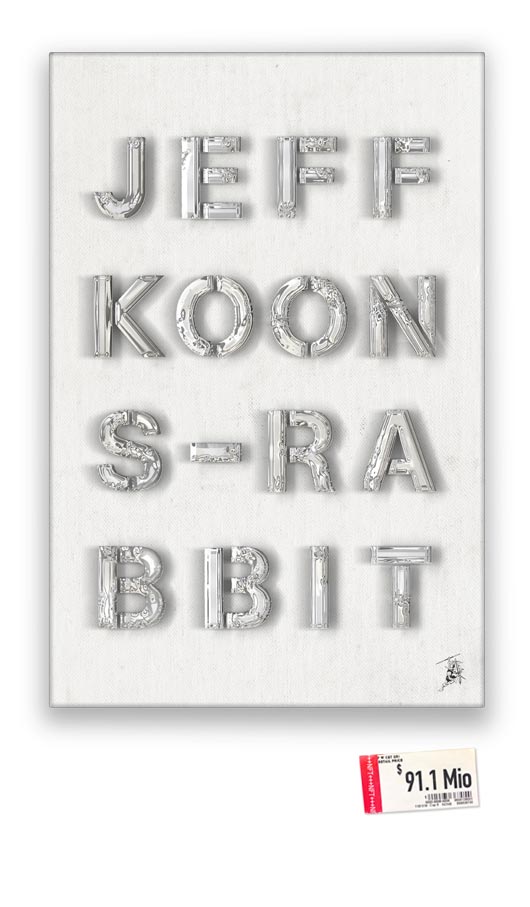
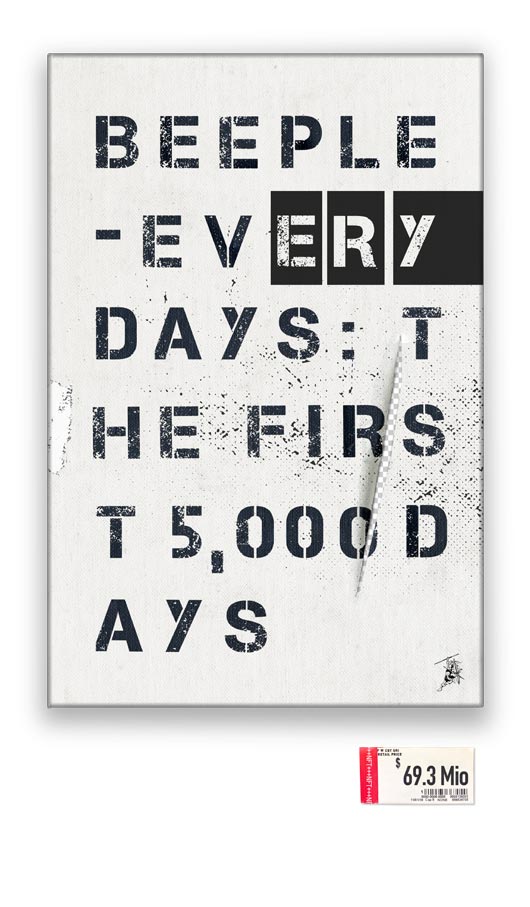
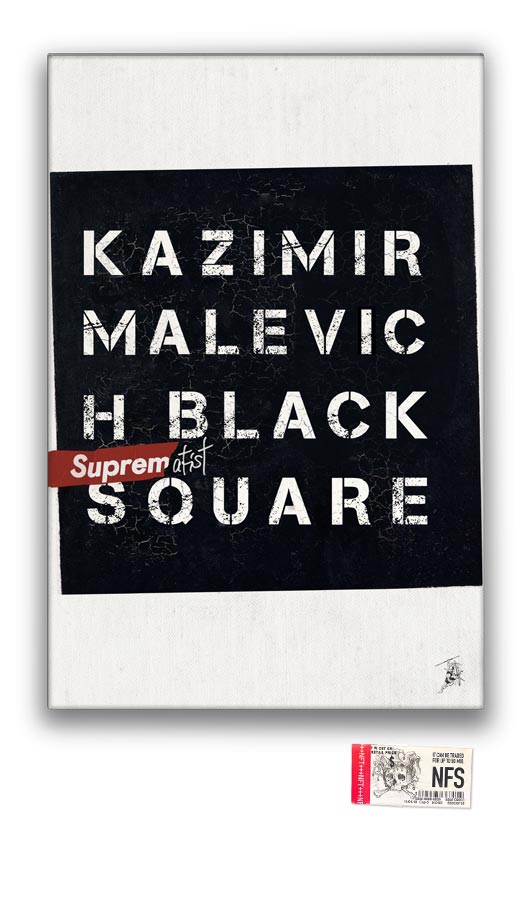
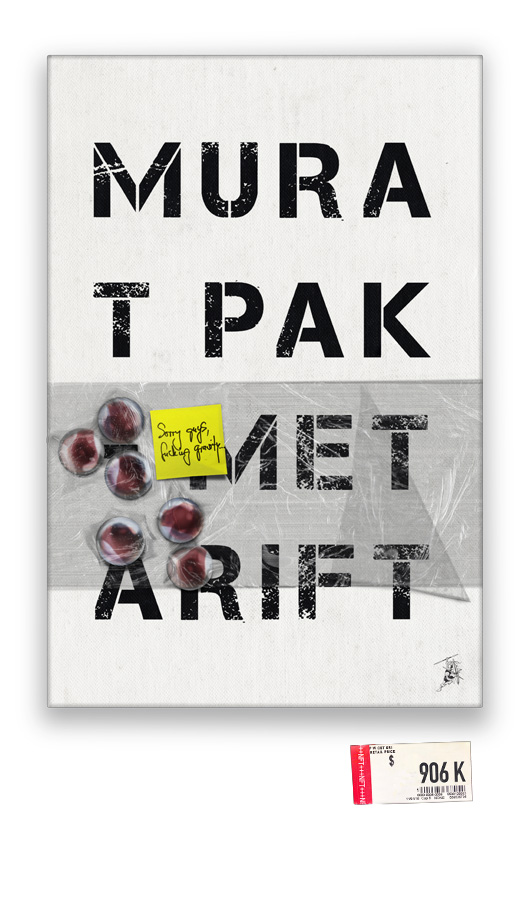
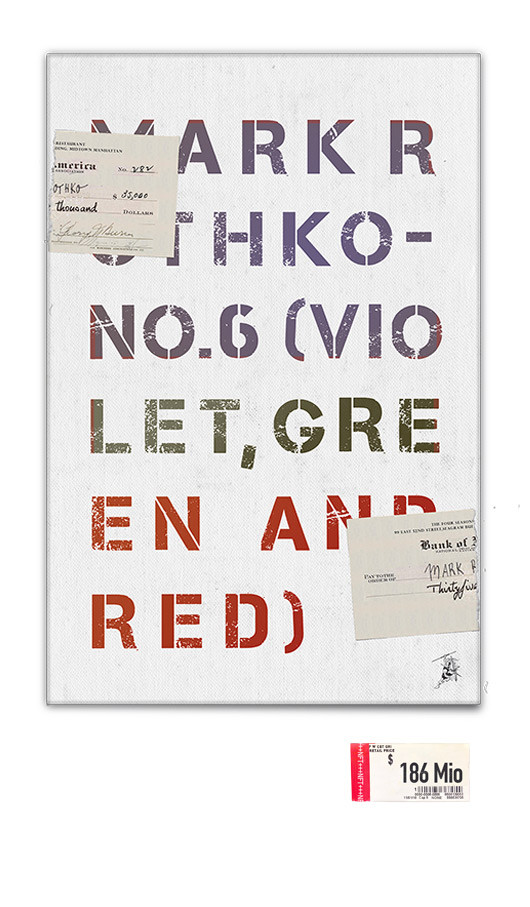
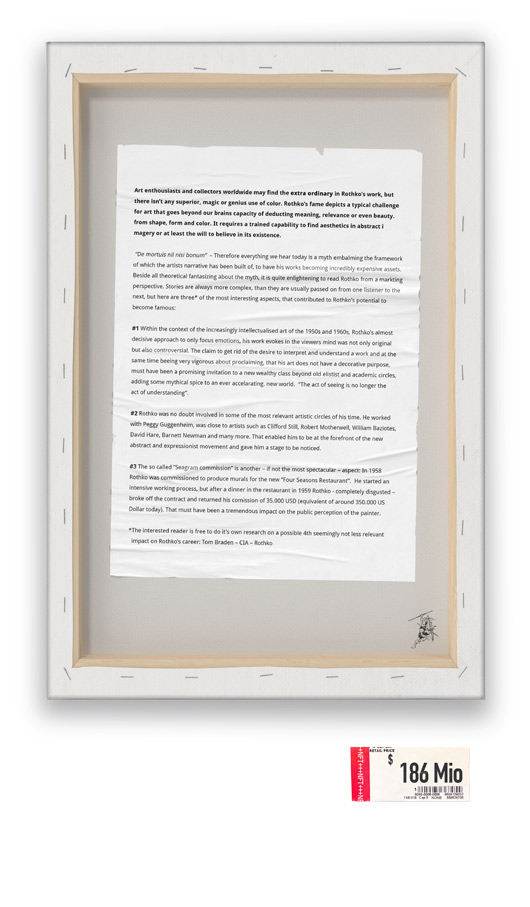
Art enthousiasts and collectors worldwide may find the extra ordinary in Rothko’s work, but there isn’t any superior, magic or genius use of color. Rothko’s fame depicts a typical challenge
for art that goes beyond our brains capacity of deducting meaning, relevance or even beauty, from shape, form and color. It requires a trained capability to find aesthetics in abstract imagery or at least the will to believe in its existence.
“De mortuis nil nisi bonum” – Therefore everything we hear today is a myth embalming the framework of which the artists narrative has been built of, to have his works becoming incredibly expensive assets. Beside all theoretical fantasizing about the myth, it is quite enlightening to read Rothko from a markting perspective. Stories are always more complex, than when they are usually passed down on from one listener to the next, but here are three* of the most interesting aspects, that contributed to Rothko’s potential to become famous:
#1 Within the context of the increasingly intellectualised art of the 1950s and 1960s, Rothko’s almost decisive approach to only focus emotions, his work evokes in the viewers mind was not only original
but also controversial. The claim to get rid of the desire to interpret and understand a work and at the same time beeing very vigorous about proclaiming, that his art does not have a decorative purpose,
must have been a promising invitation to a new wealthy class beyond old elistist and academic circles, adding some mythical spice to an ever accelarating. new world. “The act of seeing is no longer the
act of understanding”.
#2 Rothko was no doubt involved in some of the most relevant artistic circles of his time. He worked with Peggy Guggenheim, was close to artists such as Clifford Still, Robert Motherwell, William Baziotes, David Hare, Barnett Newman and many more. That enabled him to be at the forefront of the new abstract and expressionist movement and gave him a stage to be noticed.
#3 The so called “Seagram commission” is another – if not the most spectacular – aspect: In 1958 Rothko was commissioned to produce murals for the new “Four Seasons Restaurant”. He started an intensive working process, but after a dinner in the restaurant in 1959 Rothko - completely disgusted – broke off the contract and returned his comission of 35.000 USD (equivalent of around 350.000 US Dollar today). That must have been a tremendous impact on the public perception of the painter.
*The interested reader is free to do it’s own research on a possible 4th seemingly not less relevant impact on Rothko’s career: Tom Braden – CIA – Rothko
